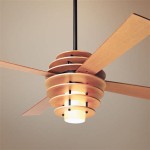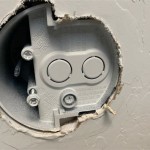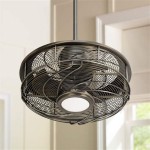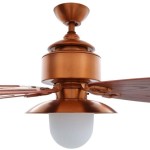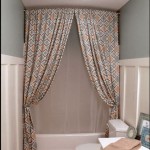Do You Put Crown Molding On A Vaulted Ceiling? Examining the Aesthetic and Practical Considerations
The question of whether to install crown molding on a vaulted ceiling is a common one for homeowners renovating or building new homes. Vaulted ceilings, characterized by their upward sloping planes meeting at a central ridge, offer a sense of spaciousness and architectural interest. Crown molding, a decorative trim typically installed where walls meet the ceiling, adds a touch of elegance and refinement. However, the decision to combine these two architectural features requires careful consideration of several factors, including the style of the home, the specific characteristics of the vaulted ceiling, and the desired aesthetic outcome.
This article explores the various aspects to consider when deciding whether to install crown molding on a vaulted ceiling, examining the aesthetic implications, practical challenges, and potential solutions. The goal is to provide a comprehensive overview that empowers readers to make informed decisions that align with their design goals and budget.
Aesthetic Considerations: Enhancing or Detracting from the Vaulted Ceiling's Appeal
The primary consideration when deciding to install crown molding on a vaulted ceiling is the aesthetic impact it will have. Crown molding can significantly enhance the visual appeal of a space, but it can also detract from it if not chosen and installed appropriately. The key is to select a molding style that complements both the architectural style of the home and the specific characteristics of the vaulted ceiling.
For example, in a traditional home with a formal aesthetic, a substantial, ornate crown molding might be a fitting choice. The molding can emphasize the height of the ceiling and add a layer of sophistication. Conversely, in a more modern or minimalist setting, a simpler, cleaner crown molding profile may be more appropriate. A sleek, unadorned molding will add a subtle detail without overwhelming the clean lines of the space.
The size of the vaulted ceiling is another key factor. In a small room with a high vaulted ceiling, very large crown molding may appear disproportionate, making the room feel smaller and more cramped. In such cases, a smaller, more delicate crown molding might be a better choice. Conversely, in a large room with a high vaulted ceiling, a larger crown molding can help to define the space and add a sense of grandeur.
The texture and color of the walls and ceiling should also be taken into account. If the walls and ceiling are painted in the same color, crown molding can provide a visual break and add depth. If the walls and ceiling are different colors, the crown molding can be used to tie the two together or to create a contrasting accent.
Ultimately, the aesthetic impact of crown molding on a vaulted ceiling is subjective and depends on personal preferences. However, by carefully considering the style of the home, the size of the vaulted ceiling, and the texture and color of the walls and ceiling, homeowners can make informed decisions that enhance the overall look and feel of their space.
Practical Challenges: Addressing Angles, Installation, and Lighting
Beyond aesthetics, the installation of crown molding on a vaulted ceiling presents a number of practical challenges. The most significant is the angled nature of the ceiling. Unlike traditional flat ceilings, vaulted ceilings have varying angles that require precise measurements and cuts to ensure a seamless and professional finish.
Cutting crown molding for angled corners requires specialized tools and techniques. A miter saw is essential for making accurate angled cuts, and a coping saw may be needed to fine-tune the fit of the molding. The process involves calculating the correct miter and bevel angles for each corner, which can be complex and time-consuming. Mistakes can result in gaps or overlaps in the molding, detracting from the overall appearance.
Installation on a vaulted ceiling also requires careful planning and execution. Due to the height of the ceiling, scaffolding or ladders may be needed to reach the installation area safely. It is important to ensure that the scaffolding or ladders are stable and secure to prevent accidents. Furthermore, it is crucial to have a helper to hold the molding in place while it is being fastened to the wall.
Lighting can also pose a challenge. If the vaulted ceiling has recessed lighting, the crown molding must be installed in a way that does not obstruct the light fixtures. Careful planning is needed to ensure that the molding is positioned correctly and that the light is distributed evenly throughout the room. Furthermore, the crown molding itself can be used to conceal wiring for additional lighting, such as rope lighting or LED strips, which can add ambiance and highlight the architectural features of the ceiling.
Another practical consideration is the material of the crown molding. Options include wood, polyurethane, and PVC. Wood is a traditional choice that offers a natural look and feel, but it can be more expensive and require more maintenance. Polyurethane is a lightweight and durable option that is resistant to moisture and insects, making it a good choice for bathrooms and kitchens. PVC is another durable and moisture-resistant option that is often used in exterior applications, but it can also be used indoors.
Addressing these practical challenges requires careful planning, the right tools and materials, and a good understanding of carpentry techniques. Homeowners who are not comfortable tackling this project themselves should consider hiring a professional contractor to ensure a successful and aesthetically pleasing result.
Alternatives to Crown Molding: Exploring Other Decorative Options
While crown molding is a popular choice for adding decorative detail to vaulted ceilings, it is not the only option. There are several alternatives that can achieve similar aesthetic effects, each with its own advantages and disadvantages. Exploring these alternatives can help homeowners find the best solution for their specific needs and preferences.
One alternative is to use a simple painted stripe along the top of the wall where it meets the ceiling. This can create a subtle visual break and add a touch of color without the added expense and complexity of installing crown molding. The width and color of the stripe can be customized to suit the style of the room.
Another option is to install a decorative frieze. A frieze is a band of ornamentation that runs along the top of a wall, typically just below the ceiling. Friezes can be made from a variety of materials, including plaster, wood, and metal. They can be plain or highly decorative, and they can be painted or left natural.
Wall trim, such as chair rail or picture rail, can also be used to add decorative detail to a room with a vaulted ceiling. These trims are typically installed at a lower height than crown molding, but they can still create a visual interest and add a sense of formality. They can be used alone or in combination with other decorative elements.
Another interesting option is to use fabric panels to decorate the upper portion of the walls. This can add texture and warmth to the room, and it can be a relatively easy and inexpensive way to create a dramatic effect. The fabric panels can be attached to the wall with adhesive or staples.
For a more contemporary look, consider using metal accents. Metal trim, such as aluminum or stainless steel, can add a sleek and modern touch to a vaulted ceiling. The metal trim can be used to highlight the architectural features of the ceiling or to create a contrasting accent.
Finally, consider the possibility of leaving the vaulted ceiling unadorned. In some cases, the simplicity of a clean, unadorned ceiling can be the most effective design choice. This is especially true in minimalist or modern spaces where the focus is on clean lines and simplicity.
Choosing the right decorative element for a vaulted ceiling depends on the style of the home, the size of the room, and the desired aesthetic effect. By exploring the various alternatives to crown molding, homeowners can find the perfect solution for their specific needs and preferences.
In conclusion, the decision of whether to put crown molding on a vaulted ceiling is a complex one that requires careful consideration of various factors. By weighing the aesthetic implications, practical challenges, and alternative options, homeowners can make informed decisions that enhance the beauty and value of their homes.

Can You Put Crown Molding On A Vaulted Ceiling Hometalk

How To Install Crown Molding On Vaulted Or Cathedral Ceilings The Joy Of Moldings

Crown Molding On Angled Ceilings Makely
Does Crown Molding Look Good In A Home With Vaulted Ceilings That Are Pitched At An Angle Between 8 And 14 Walls Quora

Vaulted Ceiling With Crown Molding

How To Install Crown Molding On Vaulted Or Cathedral Ceilings The Joy Of Moldings

Installing Crown Molding On A Vaulted Ceiling Pro Construction Guide

Installing Crown Moulding On A Sloped Ceiling Doityourself Com Community Forums

Installing Crown Moulding Part Two Canadian Woodworking

How To Install Crown Molding On A Vaulted Cathedral Ceiling Without Transition Piece
Related Posts

